+33 (0)1 40 41 96 42

When it was built, Paris Cathedral was the tallest cathedral in Christendom. For over 800 years, the grande dame shone over the capital and beyond, until that day in 2019 when the whole world held its breath, fearing the worst. Who, on that evening, could have imagined that such a project could be completed in such a short space of time?
A Pharaonic project involving 250 companies and 2,000 people. It was a highly complex project, involving both state-of-the-art techniques and traditional craftsmanship, using original materials and operating methods. In France, although we are often proud, even arrogant, we are often critical of our competitiveness in many areas. This time, however, we are unanimous in our praise for the excellence and performance of the project.
In this article, we take a closer look at some of the aspects of this project that we consider to be particularly noteworthy.
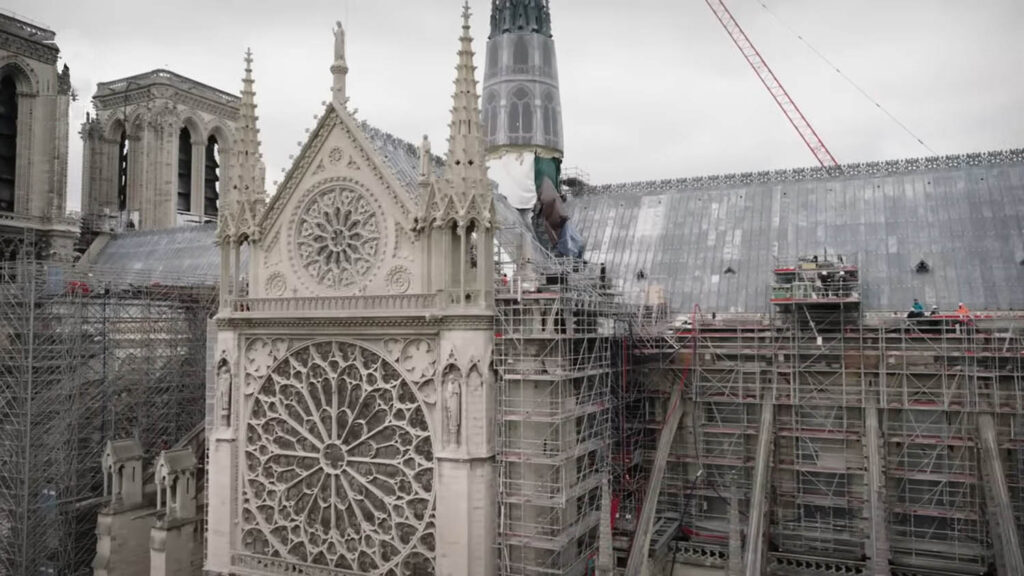
There was no question of calling into question an edifice that had stood for 8 centuries. The framework, whose weight contributes to the balance of the building, was rebuilt identically. It took 2,000 oak trees to cut the beams that make up the structure, shaped by hand as they were back in the day. The medieval framework is made up of 1,850 different types of timber. Only one detailed plan of this structure existed. Fortunately, it had been reconstructed by hand by two architects 5 years before the fire.
“We find ourselves having the same gestures and discussions as the master builders and carpenters had in the 13th century”, says Rémi Fromont, architect of historic monuments.
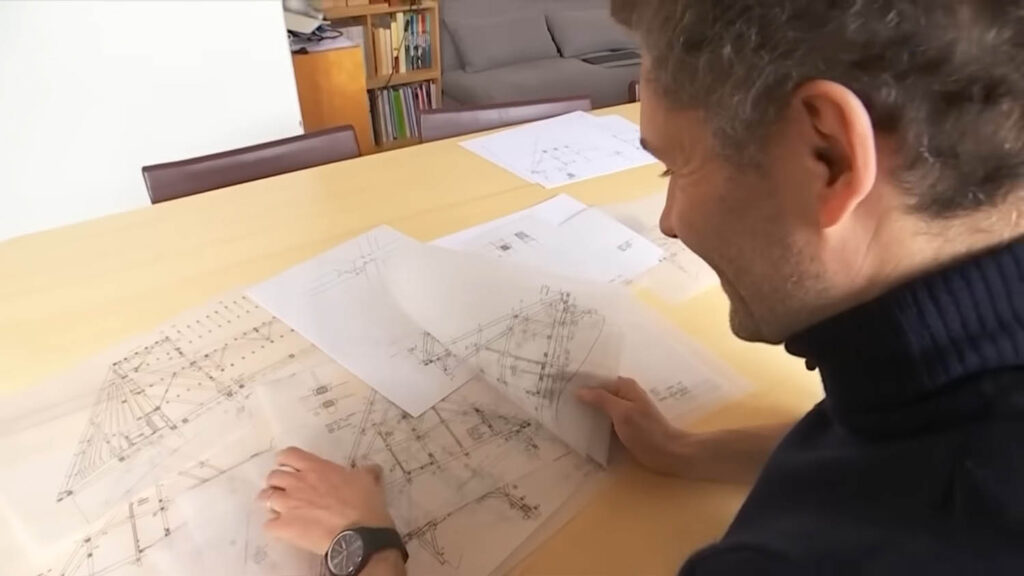
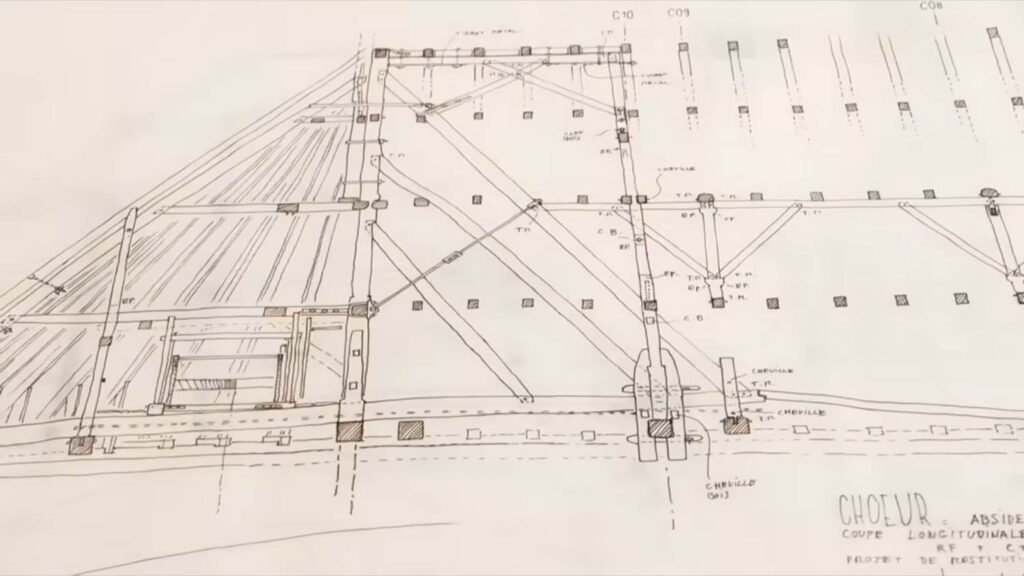
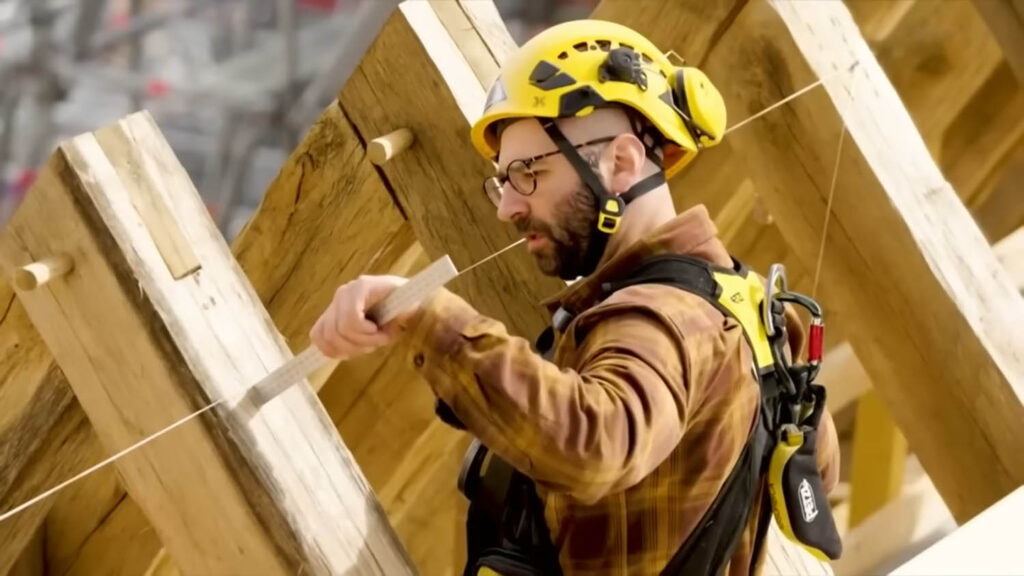
All the colors of the paintings and frescoes were rediscovered during the renovation. The fresh colors were concealed by the smoke of candles burnt over 800 years, and the dirt brought by millions of visitors clinging to the walls with humidity.
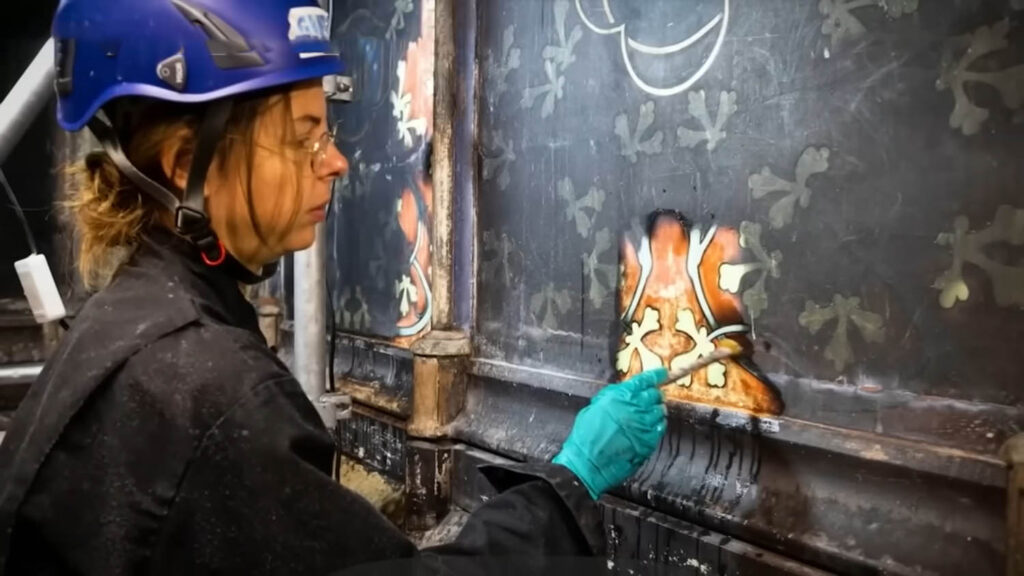
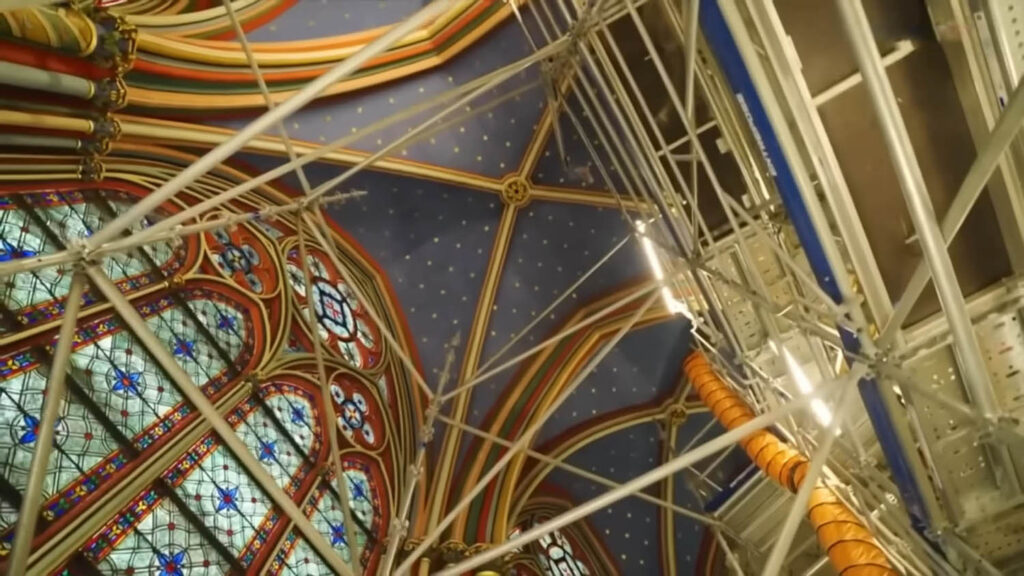
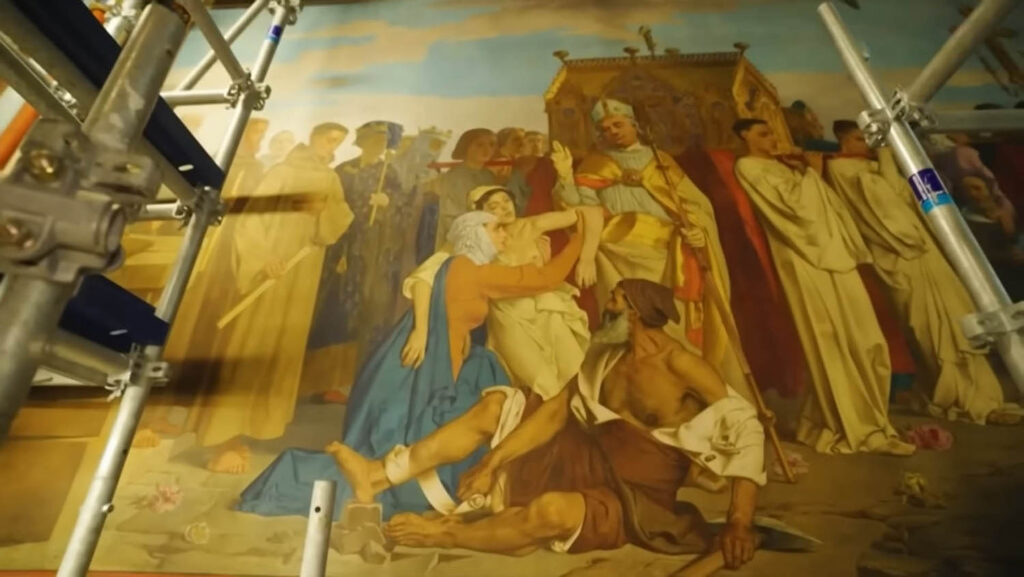
Affected by salt crystals from fire cannon water, the stone of the cathedral’s interior walls required treatment, as we explained in a previous article (see our article). This treatment necessitated the erection of interior scaffolding just as impressive as the exterior. Each stone was designed to absorb the infiltrated crystals. The stone was then coated with a natural latex, which drank up the dirt that covered it.
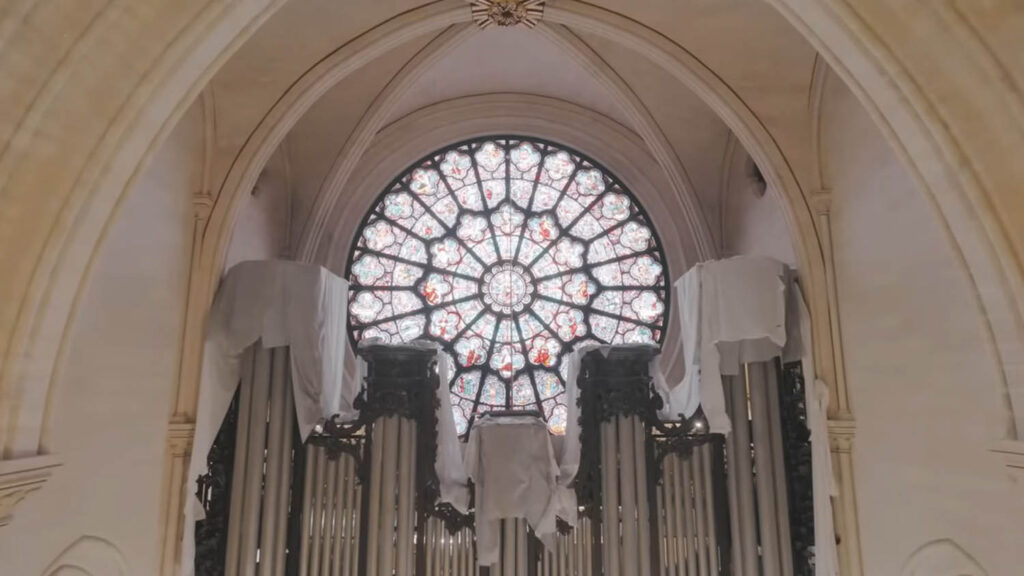

A team of cabinetmakers was commissioned to renovate the stalls. Every loose and salvageable piece was replaced. Missing parts were reshaped by the cabinetmaker and then finished by the sculptor.


All 1,500 chairs will be replaced. The chairs were designed by a French designer and are currently being manufactured by a company in the Landes region.
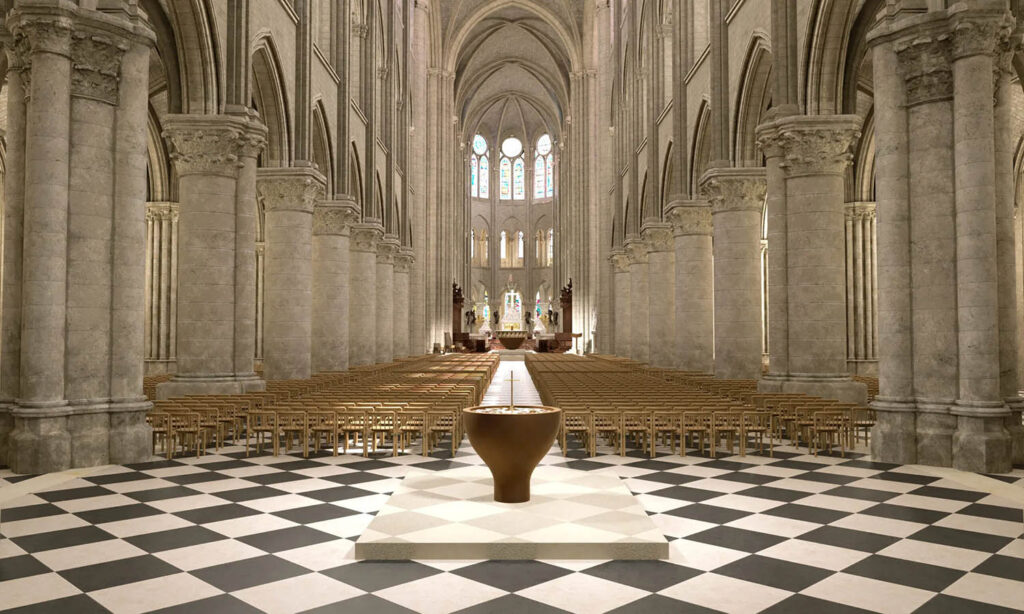
It’s an instrument as big as a building. Spared by the flames but suffering from lead dust deposits, the great organ, with its 8,000 pipes, case and action, was dismantled. It took the eleven organ builders four months to complete the removal and shipping of the parts to the three restoration workshops.
The pipes were re-installed at the same time as tuning and voicing. In the evening, when the journeymen and workers have left the site, the organ builders can continue their work to ensure that the instrument sounds just right.


An impressive array of equipment was put in place to prevent any further fires:
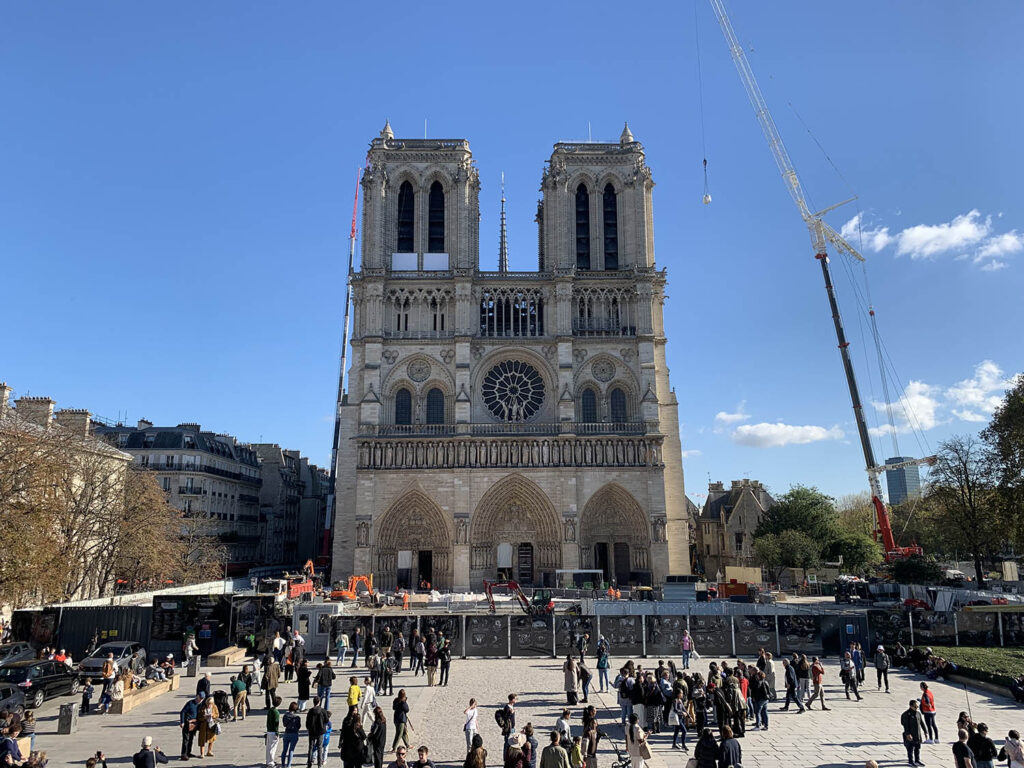
It is of course with great emotion that we take stock of this work, which was only possible thanks to the donations of 380,000 people from all over the world, some of them modest. The 2,000 people involved in the project also come from all over the world. This project was an opportunity to prove to humanity that it’s commitment, togetherness and passion that make excellence.
5 Notre Dame interiors in Assassin’s Creed® Unity :
“Eternal Notre-Dame” is an immersive virtual reality experience that lets you relive the cathedral’s history through a digital reconstruction:

19, rue des Prêtres-Saint-Germain-l'Auxerrois
75001 Paris
+33 (0)1 40 41 96 42